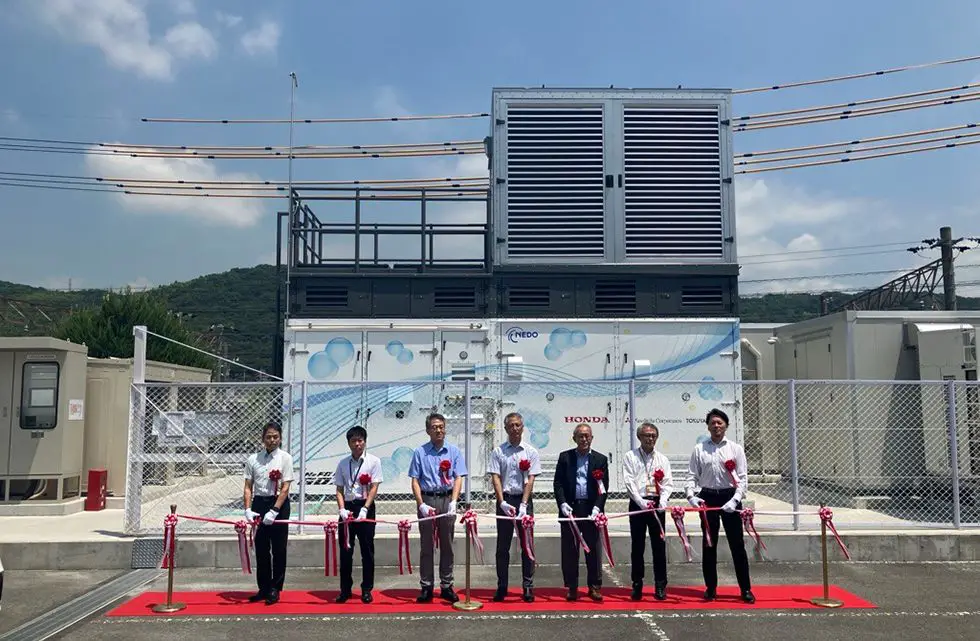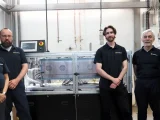
Honda’s Stationary Hydrogen Fuel Cell Project Powers Up in Japan
August 1, 2025Honda Motor Co., Ltd. is teaming up with Tokuyama Corporation and Mitsubishi Corporation on an ambitious new pilot project that could shake up how Japan powers its digital future—with help from hydrogen fuel cells.
From the Streets to the Server Room
On August 1, 2025, in Shunan City, Yamaguchi Prefecture, the three companies kicked off a unique test: a stationary fuel cell power station made using repurposed fuel cells from Honda’s CR-V e:FCEV model. The goal? To power a distributed data center—something that’s becoming a real energy hog thanks to AI, cloud computing, and 24/7 data demands.
What makes this setup especially interesting is the fuel source. The system runs on by-product hydrogen, a cleaner alternative that Tokuyama produces through saltwater electrolysis as part of its regular chemical production process. And Shunan isn’t just any city—known for its industrial backbone and chemical expertise, it’s a natural fit to host this kind of real-world experiment.
Why It’s a Big Deal: Cleaner Power, Smarter Setup
This isn’t just tech for tech’s sake. Backed by NEDO (New Energy and Industrial Technology Development Organization), the project is part of Japan’s broader push to build a carbon-neutral society. It’s currently testing four energy use cases: backup power, off-grid operations, peak consumption management, and grid stabilization. Each is aimed at creating a power system that’s not only reliable—but flexible too.
At the heart of it all is a modular, scalable system. The fuel cells can be linked in series up to 1 MW, or in parallel to meet even higher loads. A battery energy storage system (BESS) helps handle power fluctuations, while a smart energy management system (EMS) keeps everything running smoothly by switching between sources in real time.
Breathing New Life into Vehicle Power
One big takeaway here? These aren’t brand new fuel cells—they’re getting a second life after powering cars. By turning old automotive tech into stationary assets, the project puts a fresh spin on industrial decarbonization while extending the lifecycle of high-tech components. It’s a smart way to lower total system costs while doing right by the planet.
Honda’s hardly new to this game either. With more than three decades under its belt exploring fuel cell mobility, the company’s eyes are set on a bigger goal: reaching carbon neutrality across all products and operations by 2050. This project is another solid step in that direction.
In other words, this isn’t just about proving fuel cells work—it’s about showing they can evolve, scale, and stand up as part of real-world commercial solutions.
Mitsubishi’s Strategic Play
Let’s not overlook Mitsubishi Corporation in all of this. One of Japan’s biggest trading powerhouses, Mitsubishi is leaning heavily into sustainable infrastructure and data-driven industries. Its involvement here is a clear signal: it wants a front-row seat in the future of green-powered digital logistics—and hydrogen infrastructure fits the bill perfectly.
As data centers rapidly become one of the world’s biggest electricity consumers, this project serves as a practical example of how Japan’s industrial sector can adapt existing resources—like hydrogen by-products and automotive tech—to meet tomorrow’s energy challenges.
Scaling Up Smart—and Carefully
This Shunan initiative has legs. If it scales successfully, it could set the stage for everything from municipal backup systems to local hydrogen-fed microgrids. Japan, a country known for both bold emission goals and frequent natural disasters, could seriously benefit from a flexible, low-emissions solution like this.
Still, there are hurdles. Competing with solar-plus-battery setups, hooking into the existing grid, and winning local support won’t be easy. It’s not quite “flip a switch” territory. But for a country that’s been investing in hydrogen infrastructure since the early 2000s, this project is right in line with its long game.
The Road Ahead
This pilot isn’t just about showing off slick hardware—it’s a real-world test of a much bigger energy vision. With Honda’s next-gen fuel cell modules set to go into production in 2026—offering scalable power systems up to 3 MW—we’re looking at the building blocks of what could power entire industries.
And with technologies like green ammonia and hydrogen further weaving their way into industrial supply chains, small-scale models like this one become essential proving grounds for broader sector-wide change.
At the end of the day, if Honda’s old fuel cells can power more than just cars, they may very well help rewrite the playbook for how we think about— and deliver—energy. Quietly, this little corner of Shunan could end up leading the charge.



 With over 15 years of reporting hydrogen news, we are your premier source for the latest updates and insights in hydrogen and renewable energy.
With over 15 years of reporting hydrogen news, we are your premier source for the latest updates and insights in hydrogen and renewable energy.